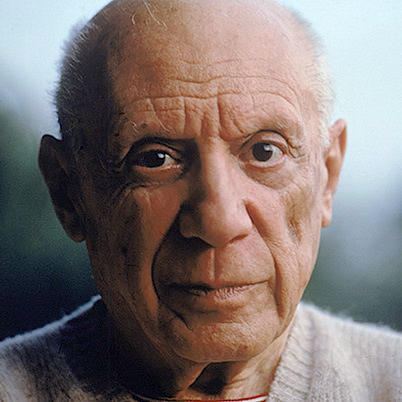Theo van Doesburg: The Art of De Stijl
Theo van Doesburg, a pivotal figure in the world of modern art, was not only an artist but also a theorist, designer, and writer. His contributions to the De Stijl movement have left an indelible mark on the history of art, architecture, and design. Born as Christian Emil Marie Küpper in 1883 in the Netherlands, he later adopted the pseudonym Theo van Doesburg, under which he became widely known. His work, both as an individual artist and as a central figure in De Stijl, encapsulates a quest for harmony, abstraction, and the universal language of art.
Early Influences and Formation of Style
Theo van Doesburg's artistic journey began with a deep interest in literature and poetry, which later influenced his visual arts. His early works were heavily inspired by the Symbolist movement, which sought to express ideas and emotions through symbolic imagery. However, it was his exposure to the works of artists like Wassily Kandinsky and the writings of Piet Mondrian that shifted his focus towards abstraction.
Van Doesburg's transition to abstract art was not merely a stylistic change but a philosophical one. He believed that art should transcend the individual and the specific to reach the universal and the eternal. This belief became the cornerstone of his artistic philosophy and led to his eventual involvement with the De Stijl movement.
The De Stijl Movement: A New Artistic Vision
In 1917, Theo van Doesburg, along with Piet Mondrian, founded the De Stijl movement, which aimed to create a new form of art that was purely abstract and devoid of any references to the natural world. The movement sought to reduce art to its essential elements: form, color, and line. The artists of De Stijl believed that through this reduction, they could create a universal language of art that would transcend cultural and temporal boundaries.
Van Doesburg played a crucial role in the development and dissemination of De Stijl's ideas. He was not only an artist but also an editor of the De Stijl magazine, through which he articulated the movement's theories and connected with like-minded artists across Europe. His writings were instrumental in shaping the theoretical framework of De Stijl and promoting its ideals of harmony and order.
Artworks and Innovations
Theo van Doesburg's artworks are characterized by their use of geometric shapes, primary colors, and a strong emphasis on horizontal and vertical lines. His compositions often feature a grid-like structure that reflects his belief in the underlying order of the universe. Unlike Mondrian, who strictly adhered to the orthogonal grid, van Doesburg experimented with diagonal lines, which he believed introduced dynamism and movement into his compositions.
One of his most significant contributions to abstract art was the development of Elementarism, a variation of De Stijl principles. Elementarism allowed for the use of diagonal lines and introduced a sense of movement and energy that was absent in the strictly horizontal and vertical compositions of early De Stijl works. This innovation marked a departure from Mondrian's rigid grid and opened up new possibilities for abstraction in art.
Architectural and Design Contributions
Theo van Doesburg's influence extended beyond painting into architecture and design. He believed that the principles of De Stijl should be applied to all forms of visual expression, including architecture, typography, and interior design. His architectural designs reflect the same geometric abstraction and use of primary colors that characterize his paintings.
One of his most famous architectural works is the design of the Café Aubette in Strasbourg, which he created in collaboration with Jean Arp and Sophie Taeuber-Arp. The interior of the Café Aubette is a masterpiece of De Stijl design, with its use of geometric shapes, primary colors, and a harmonious balance between form and function. The design of the Café Aubette exemplifies van Doesburg's belief that art should be integrated into every aspect of life, blurring the boundaries between fine art and applied art.
The Legacy of Theo van Doesburg
Theo van Doesburg's influence on modern art, design, and architecture is profound and far-reaching. His work laid the foundation for the development of modernist architecture and design, influencing movements such as the Bauhaus and Constructivism. Van Doesburg's insistence on the integration of art and life continues to resonate in contemporary art and design practices.
In addition to his visual artworks, van Doesburg's writings and theoretical contributions have left a lasting impact on the discourse of modern art. His essays on abstraction, the role of the artist in society, and the relationship between art and technology remain relevant today, offering insights into the continuing evolution of modern art.
Conclusion: A Visionary of Modern Art
Theo van Doesburg was more than just a painter; he was a visionary who sought to redefine the role of art in society. His contributions to the De Stijl movement and his innovations in abstraction have secured his place as one of the most important figures in the history of modern art. Through his work, van Doesburg challenged the traditional boundaries of art, design, and architecture, paving the way for the development of new artistic languages and practices.
His legacy is evident in the continued relevance of De Stijl principles in contemporary art and design. As we look back on his life and work, it is clear that Theo van Doesburg was a true pioneer, whose vision and creativity continue to inspire artists and designers around the world. His quest for a universal language of art, one that transcends the individual and speaks to the collective human experience, remains a powerful and enduring influence in the world of art.
















